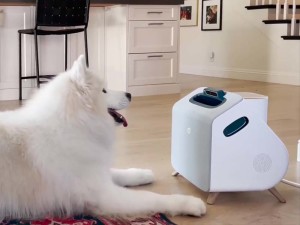New AI Technology Can Help Decode Dog Barks
The tech may help us better understand our pups.
No one likes being misunderstood — including your pup. And while they might bark, whine, howl, and yip their little hearts out, at the end of the day, they don’t speak your language (without buttons, anyway) — which leaves a lot of room for human error.
Studies have found that people really aren’t all that great at understanding their pup’s body language and vocalization habits, especially when it comes to aggression. But modern tech might offer a solution. New researchopens in new tab from the University of Michigan (U-M) is using artificial intelligence to decode different kinds of dog barks, which could do wonders for helping us understand our canine friends.
How AI is decoding dog barks
An early challenge in building the new AI model was that, unlike human speech, there is not much data on dog barks available publicly. “Animal vocalizations are logistically much harder to solicit and record,” Artem Abzaliev, a U-M doctoral student and the lead author of the study, told University of Michigan Newsopens in new tab. “They must be passively recorded in the wild or, in the case of domestic pets, with the permission of owners.”
Trick question: All dogs are perfect! But find out which type is the best fit for you.
So, instead of starting from scratch, the researchers turned to existing AI models that were originally designed to analyze human speech patterns; there are many of these models, thanks to programs like language translation and voice-to-text. “These models are trained to distinguish nuances in human speech, like tone, pitch, and accent, and convert this information into a format that a computer can use to identify what words are being said, recognize the individual speaking, and more,” reported U-M News.
Using one of these models, Wav2Vec2, they used vocalizations from 74 dogs of various breeds, sex, and ages to train the AI to analyze the tones of different dog sounds. Some of the included contexts were aggressive barking at a stranger, anxious barking, positive squealing, negative squealing, barking during play, and barking in fear of a stranger.
How much do you spend on your pet per year?
The AI was able to accurately determine the breed, sex, and age of different dogs by listening to the vocalizations. It could also effectively determine the contexts behind the barks, such as whether the sound was playful or aggressive.
“There is so much we don’t yet know about the animals that share this world with us,” said Rada Mihalcea, a U-M professor and the director of U-M’s AI Laboratory. The researchers are hoping that further tech advances can be made to help animal behaviorists, researchers, and pet parents learn how to interpret and respond to the emotional needs of the dogs in their lives.









